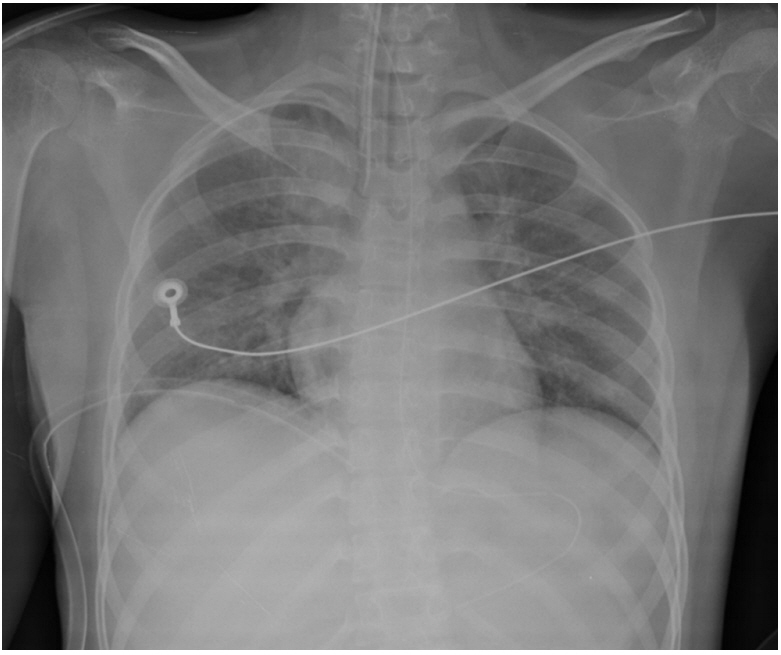Articles
- Page Path
- HOME > Acute Crit Care > Volume 33(4); 2018 > Article
-
Image in Critical Care
Trauma Tension Pneumothorax after Attempting Insertion of a Central Venous Catheter -
Ki Hoon Kim

-
Acute and Critical Care 2018;33(4):280-281.
DOI: https://doi.org/10.4266/acc.2017.00598
Published online: November 13, 2018
Department of Surgery, Inje University Haeundae Paik Hospital, Inje University College of Medicine, Busan, Korea
- Corresponding author Ki Hoon Kim Department of Surgery, Inje University Haeundae Paik Hospital, 875 Haeun-daero, Haeundae-gu, Busan 48108, Korea Tel: +82-51-797-0260 Fax: +82-51-797-0276 E-mail: medhun@hanmail.net
• Received: December 13, 2017 • Revised: April 21, 2018 • Accepted: August 17, 2018
Copyright © 2018 The Korean Society of Critical Care Medicine
This is an Open Access article distributed under the terms of the Creative Commons Attribution Non-Commercial License (http://creativecommons.org/licenses/by-nc/4.0/) which permits unrestricted non-commercial use, distribution, and reproduction in any medium, provided the original work is properly cited.
Figure 1.Chest X-ray showing right tension pneumothorax with mediastinal shifting to the left side. The right lung is completely collapsed (arrows), and the trachea is pushed to the left. The right hemidiaphragm is depressed.


- 1. McGee DC, Gould MK. Preventing complications of central venous catheterization. N Engl J Med 2003;348:1123-33.ArticlePubMed
- 2. Eisen LA, Narasimhan M, Berger JS, Mayo PH, Rosen MJ, Schneider RF. Mechanical complications of central venous catheters. J Intensive Care Med 2006;21:40-6.ArticlePubMed
- 3. Roberts DJ, Leigh-Smith S, Faris PD, Blackmore C, Ball CG, Robertson HL, et al. Clinical presentation of patients with tension pneumothorax: a systematic review. Ann Surg 2015;261:1068-78.ArticlePubMed
- 4. Plewa MC, Ledrick D, Sferra JJ. Delayed tension pneumothorax complicating central venous catheterization and positive pressure ventilation. Am J Emerg Med 1995;13:532-5.ArticlePubMed
References
Figure & Data
References
Citations
Citations to this article as recorded by 

- Comparison between ultrasound and chest X-ray to confirm central venous catheter tip position
Leoni de Man, Mari Wentzel, Cornel van Rooyen, Edwin Turton
South African Journal of Radiology.2023;[Epub] CrossRef

 KSCCM
KSCCM

 PubReader
PubReader ePub Link
ePub Link Cite
Cite



